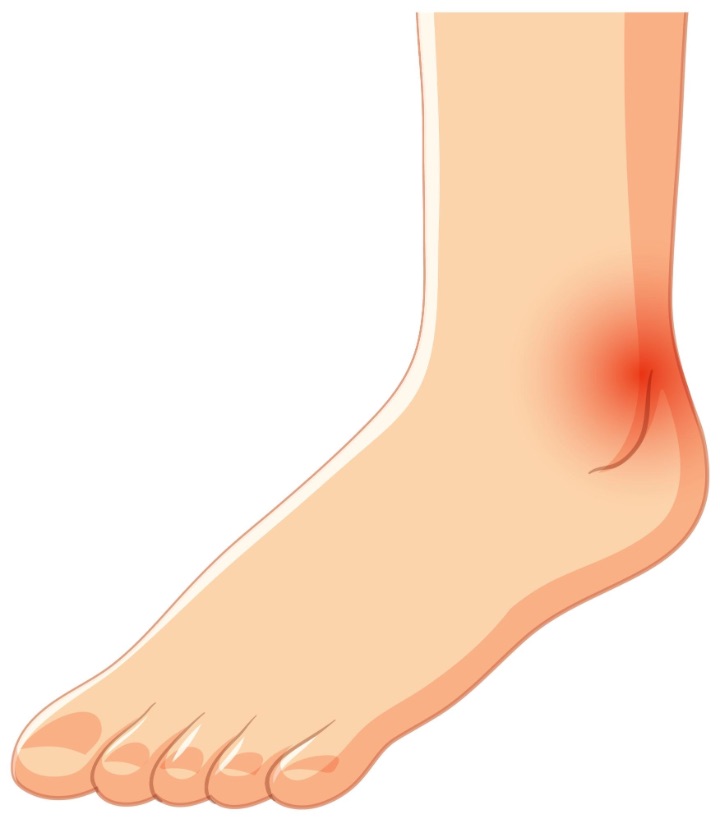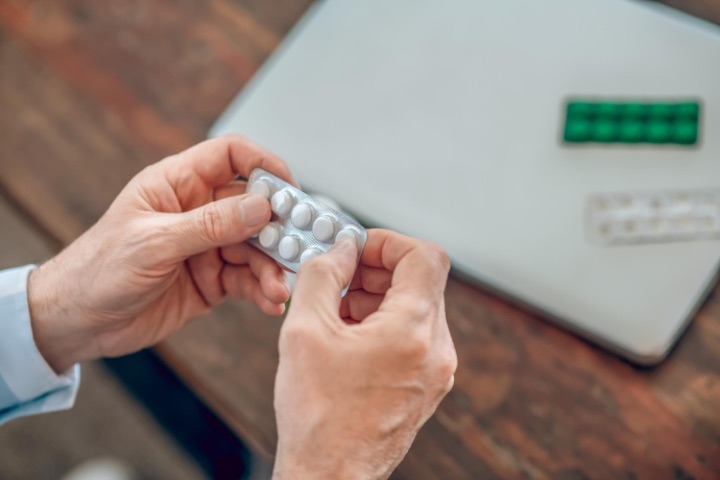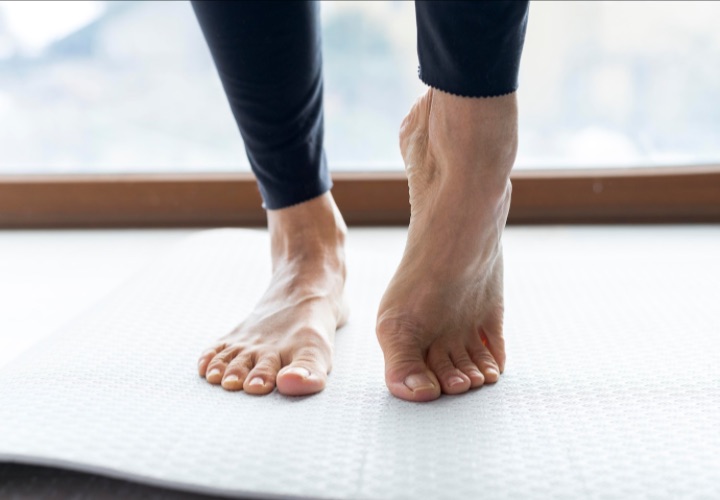FHL tendinopathy is a condition that affects the flexor hallucis longus (FHL) tendon in the foot. FHL tendinopathy can cause significant pain and discomfort in the foot, often leading to difficulty walking or engaging in physical activity.
Flexor Hallucis Longus (FHL) tendinopathy is a condition that affects the FHL tendon, which runs along the back of the ankle and connects to the big toe. This tendon is responsible for flexing the big toe downwards, and it can become inflamed or damaged due to a variety of causes.

Photo Credit: brgfx
The FHL tendon can be injured in several ways. FHL tendonitis is a common condition that occurs when the tendon becomes inflamed due to overuse or strain. FHL tenosynovitis is another condition that affects the FHL tendon, causing inflammation of the synovial sheath that surrounds it. Other injuries that can affect the FHL tendon include tears and ruptures, resulting from sudden trauma or repeated strain over time.
The symptoms can vary depending on the severity of the condition and the location of the damage. Common symptoms include pain, tenderness, and swelling in the foot and ankle, especially around the back of the ankle and the area around the big toe. Patients may also experience limited mobility and difficulty flexing the big toe downwards.
Several treatment options are available for FHL tendinopathy, depending on the severity of the condition. Non-surgical options include rest, ice, compression, and elevation, which can help reduce pain and inflammation in the affected area. Physical therapy and rehabilitation exercises are also effective treatment options, as they can help improve flexibility and strength in the foot and ankle. Surgery may sometimes be necessary to repair or replace the damaged FHL tendon.
If you suspect you may have FHL tendinopathy, seeking medical attention as soon as possible is important. Your doctor can evaluate your symptoms and recommend an appropriate course of treatment to help you manage your condition and achieve the best possible outcome.
FHL tendinopathy can be caused by a variety of factors, including overuse injuries, trauma, and underlying medical conditions. Here are some common causes of FHL tendinopathy:
Diagnosing FHL tendinopathy often begins with a physical examination. Your doctor will ask you about your symptoms, when they first appeared, and whether anything makes them better or worse. During the exam, your doctor will look for signs of FHL tendinopathy, such as pain, tenderness, and swelling in the foot.

Photo Credit: Drazen Zigic
If your doctor suspects that you have FHL tendinopathy, they may order imaging tests such as X-rays and MRIs to get a better look at the affected area. These tests can help confirm the diagnosis and rule out other possible causes of your symptoms.
Several treatment options are available for patients with FHL tendinopathy, ranging from non-surgical options to more invasive procedures. Here are some of the most common treatments:
Non-surgical options for treating FHL tendinopathy include rest, ice therapy, compression, elevation, and physical therapy. In some cases, pain relief medication or anti-inflammatory drugs may be prescribed. Massage therapy, stretching and strengthening exercises, and orthotic devices such as braces, supports, and shoe inserts can also benefit many patients.
In some cases, surgery may be necessary to treat FHL tendinopathy. Arthroscopy, tenodesis, and tendon repair and graft procedures are all options that can be considered, depending on the severity of the condition and the patient’s overall health. Recovery time varies depending on the type of surgery performed, and patients may need to undergo physical therapy or other forms of rehabilitation in order to fully recover.
Using orthotic devices such as braces, supports, and shoe inserts can be helpful for patients with FHL tendinopathy. These devices can provide support and stability to the foot, reducing the risk of further injury and allowing the foot to heal more quickly. Wearing properly fitted shoes with good arch support and cushioning can also be beneficial for many patients.
Modifying your daily routine and avoiding activities that exacerbate your symptoms is important in managing FHL tendinopathy. This may involve taking a break from certain activities or reducing the intensity or duration of your workouts. Working with a physical therapist or other medical professional can help you develop an effective activity modification plan that will allow you to continue participating in the activities you love while promoting healing and reducing pain.
Treatment for FHL tendinopathy typically begins with conservative care options. This approach focuses on managing symptoms and promoting healing without surgical intervention.

Photo Credit: zinkevych
To manage pain associated with FHL tendinopathy, over-the-counter pain relievers such as acetaminophen or nonsteroidal anti-inflammatory drugs (NSAIDs) may provide relief. Consult with a healthcare professional before taking medications.
Physical therapy is an essential component of conservative treatment for FHL tendinopathy. Your physical therapist will work with you to develop a stretching and strengthening exercise program. This program will help reduce pain and inflammation and improve the flexibility and strength of the FHL tendon.
Modifying daily activities to avoid those that cause pain or aggravate FHL tendinopathy symptoms can also help with recovery. Rest and avoid activities such as running, jumping or other high-impact exercises until symptoms subside.
Your healthcare professional may recommend wearing a brace, support, or shoe insert to minimize pain and provide additional support for the foot. Proper footwear can also help provide stability and reduce the risk of reinjury.
It’s important to remember that FHL tendinopathy can take time to heal, and recovery time varies for each individual. Consistent treatment, care, and patience will help promote a full recovery.
If conservative treatment options are not successful, surgery may be necessary to repair or replace the damaged FHL tendon. There are several surgical options available, including:

Photo Credit: Freepik
While FHL tendinopathy can be a painful and debilitating condition, there are a number of steps that individuals can take to prevent it from occurring in the first place. By understanding the various risk factors and causes associated with FHL tendinopathy, individuals can make informed decisions and take proactive steps to protect their health and wellbeing.
One of the key steps in preventing FHL tendinopathy is gaining a better understanding of the anatomy of the FHL tendon. Because this tendon is responsible for flexing the big toe and supporting the arch of the foot, it is particularly susceptible to overuse and injury. By learning more about how the FHL tendon functions and the various ways in which it can be injured, individuals can better protect themselves from these types of injuries.
Another important step in preventing FHL tendinopathy is avoiding the various risk factors associated with the condition. Some of the most common risk factors include participating in sports that require repetitive motions of the feet, and having an underlying medical condition such as arthritis. By paying close attention to these risk factors and avoiding or mitigating them, individuals can reduce their risk of developing FHL tendinopathy.
Maintaining good overall health and fitness is also important in preventing FHL tendinopathy. By eating a healthy diet and exercising regularly, individuals can keep their muscles and tendons strong and flexible, reduce the risk of overuse injuries, and promote overall wellbeing. Additionally, individuals should be sure to wear appropriate footwear during sports and other activities, and take breaks as needed to rest and recharge.
Finally, it is important for individuals who experience symptoms of FHL tendinopathy to seek medical attention and explore their treatment options as soon as possible. By taking action early and getting the appropriate medical care, individuals can reduce the severity of their symptoms and increase their chances of a complete recovery.
Symptoms of FHL tendinopathy include pain, swelling, and tenderness at the back of the ankle or lower leg. There may also be difficulty moving the big toe.
Treatment for flexor hallucis longus tendonitis often involves rest, ice, compression, elevation (RICE), anti-inflammatory medications, physical therapy, and sometimes immobilization with a cast or boot.
The healing time for flexor hallucis longus tendonitis varies depending on the severity of the injury and the chosen treatment. It may take a few weeks to several months for complete recovery.
Flexor hallucis longus tenosynovitis is often caused by overuse, repetitive strain, or injury to the tendon that runs along the back of the ankle, leading to inflammation and irritation.